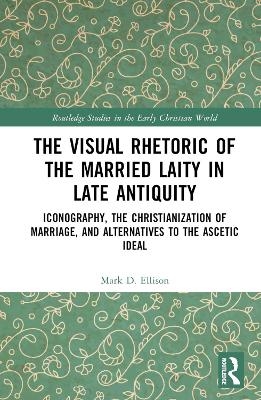
The Visual Rhetoric of the Married Laity in Late Antiquity
Routledge (Verlag)
978-1-032-54648-3 (ISBN)
This study examines third- and fourth-century portraits of married Christians and associated images, reading them as visual rhetoric in early Christian conversations about marriage and celibacy, and recovering lay perspectives underrepresented or missing in literary sources.
Historians of early Christianity have grown increasingly aware that written sources display an enthusiasm for asceticism and sexual renunciation that was far from representative of the lives of most early Christians. Often called a “silent majority,” the married laity in fact left behind a significant body of work in the material record. Particularly in and around Rome, they commissioned and used such objects as sarcophagi, paintings, glass vessels, finger rings, luxury silver, other jewellery items, gems, and seals that bore their portraits and other iconographic forms of self-representation. This study is the first to undertake a sustained exploration of these material sources in the context of early Christian discourses and practices related to marriage, sexuality, and celibacy. Reading this visual evidence increases understanding of the population who created it, the religious commitments they asserted, and the comparatively moderate forms of piety they set forth as meritorious alternatives to the ascetic ideal. In their visual rhetoric, these artifacts and images comprise additional voices in Late Antique conversations about idealized ways of Christian life, and ultimately provide a fuller picture of the early Christian world. Plentifully illustrated with photographs and drawings, this volume provides readers access to primary material evidence. Such evidence, like textual sources, require critical interpretation; this study sets forth a careful methodology for iconographic analysis and applies it to identify the potential intentions of patrons and artists and the perceptions of viewers. It compares iconography to literary sources and ritual practices as part of the interpretive process, clarifying the ways images had a rhetorical edge and contributed to larger conversations.
Accessibly written, The Visual Rhetoric of the Married Laity in Late Antiquity is of interest to students and scholars working on Late Antiquity, early Christian and late Roman social history, marriage and celibacy in early Christianity, and early Christian, Roman, and Byzantine art.
Mark D. Ellison is an Associate Professor in the Department of Ancient Scripture at Brigham Young University in Provo, UT, USA. He co-edited The Routledge Handbook of Early Christian Art (with Robin M. Jensen) and Material Culture and Women’s Religious Experience in Antiquity (with Catherine Gines Taylor and Carolyn Osiek).
Prologue: The Monk and the Matrona; 1. Introduction: Recovering the Voices of “the Silent Majority”; 2. Competing Visions: Early Christian Thought on Marriage and Celibacy; 3. Centering Christ: Adaptations of dextrarum iunctio, Concordia pronuba, and coronae impositio in Spousal Portraits; 4. Learned, Encircled, Worshipping: Other Forms of Double-Portraits and Self-Representation; 5. In the Beginning: Married Christians Putting Adam and Eve to Work; 6. After the End: Marriage, Death, and the Afterlife; 7. Conclusion: Image and Word in the Conversations of the Christian Past; Appendix: Adam and Eve Images and Marital Contexts on Christian Sarcophagi.
| Erscheinungsdatum | 13.12.2023 |
|---|---|
| Reihe/Serie | Routledge Studies in the Early Christian World |
| Zusatzinfo | 3 Tables, black and white; 100 Halftones, black and white; 100 Illustrations, black and white |
| Verlagsort | London |
| Sprache | englisch |
| Maße | 156 x 234 mm |
| Gewicht | 1760 g |
| Themenwelt | Kunst / Musik / Theater ► Kunstgeschichte / Kunststile |
| Geschichte ► Allgemeine Geschichte ► Vor- und Frühgeschichte | |
| Geschichte ► Allgemeine Geschichte ► Altertum / Antike | |
| Geschichte ► Teilgebiete der Geschichte ► Religionsgeschichte | |
| Religion / Theologie ► Christentum ► Kirchengeschichte | |
| ISBN-10 | 1-032-54648-4 / 1032546484 |
| ISBN-13 | 978-1-032-54648-3 / 9781032546483 |
| Zustand | Neuware |
| Informationen gemäß Produktsicherheitsverordnung (GPSR) | |
| Haben Sie eine Frage zum Produkt? |
aus dem Bereich


